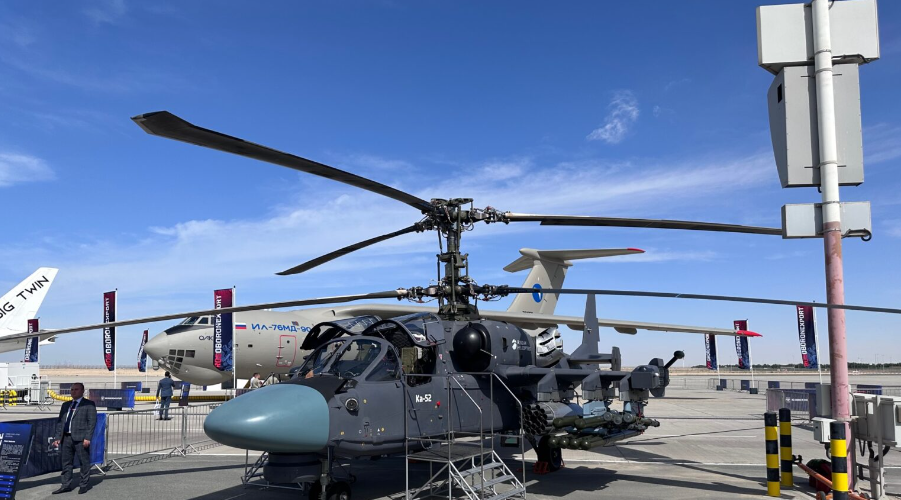Russia also turned to the Middle East in November, pitching up at the Dubai Air Show to drum up business, and though no orders or contracts were publicly announced, an industrial presence featuring some of the country’s leading defense companies made a lasting impression.
For a fleeting moment this year, Russian President Vladimir Putin’s dictatorship creaked like never before when threatened with a coup in the streets of Moscow — one that ultimately ended prematurely when the then-leader of the Wagner mercenary group Yevgeny Prigozhin called off his “March for Justice” and ordered those under his charge to return to Ukraine. Prigozhin later died in a plane crash north of Moscow, the cause of which was identified by US and western officials as a deliberate explosion.
As short lived as the uprising turned out, it was seized upon by Western lawmakers as an “unprecedented challenge” to Putin’s reign, and a sign that “cracks are emerging” in Russia’s war against Kyiv, James Cleverly, UK home secretary, said in June. Similarly, NATO Secretary General Jens Stoltenberg called the Wagner feud “one more demonstration of the big strategic mistake” Putin made when deciding to invade Ukraine.
[This article is one of many in a series in which Breaking Defense reporters look back on the most significant (and entertaining) news stories of 2023 and look forward to what 2024 may hold.]
On the battlefield, Russia’s war effort was also wobbling in June and July, as Ukraine regained territory after launching a long planned counteroffensive, executing a large drone attack on the Crimea Bridge in the process — an obvious strategic win as the bridge connects the occupied Crimean peninsula to Russia. Ukraine found success again in Crimea, when it struck the port city of Sevastopol, home to Russia’s Black Sea fleet. Soon after that attack, one analyst told Breaking Defense, Moscow’s position in Sevastopol “is becoming less tenable by the day,” while Ukraine special forces claimed 34 Russian naval leaders and officers had been killed in the attack.
New Russian stockpile issues emerged in 2023, too, with a Conflict Armament Research (CAR) weapons recovery and tracing investigation discovering that Moscow was firing air-to-surface missiles at Ukraine only months after producing the weapons.
The findings led Damien Spleeters, deputy director of operations at CAR to suggest Russia is facing troubling stockpile issues and increased production pressure that “might not be indefinitely sustainable.” Additional analysis [PDF] from the Center for Strategic and International Studies talked of Russia having expended “much of its pre-war stockpile of precision-guided missiles” since launching the invasion of Ukraine.
Russian production lines also look to have suffered from supply challenges in the wake of Western sanctions, prompting closer ties with Iran, a partnership that has seen Moscow increasingly reliant on the Shahed family of uncrewed aerial systems.
Russia turned to the Middle East in November, pitching up at the Dubai Air Show to drum up business, and though no orders or contracts were publicly announced, an industrial presence featuring some of the country’s leading defense companies made a lasting impression.
Featuring a standalone national pavilion and an assortment of fixed-wing, uncrewed, rotary, space and air defense systems, and air-launched missiles, the exhibiting of equipment was as grand and expansive as Russia has shown at an international trade show since the conflict in Ukraine.
The Kremlin even went so far as to say “our country presented over 250 samples of products” in Dubai — a less than credible claim according to the equipment Breaking Defense saw on display by Russian manufacturers at the trade show, though any specific total is impossible to verify.
As the year closes out, Ukraine’s counteroffensive has stalled and the war has turned into a bloody stalemate. In the meantime, Russia could look at some European governments’ discussions of ending, or potentially ending, military aid to Ukraine as a sign that the political will to sustain support for the war effort is beginning to erode.
Moscow also looks on with interest at Europe dealing with its own ammunition crisis that shows few signs of letting up, as industry leaders campaign for longer production contracts or warn of some weapons parts “suddenly” becoming unavailable for up to 24 months at a time.
